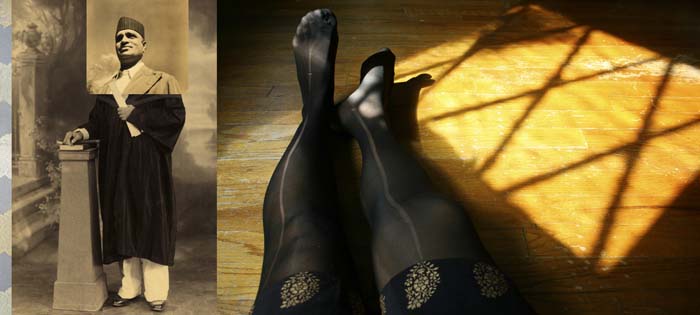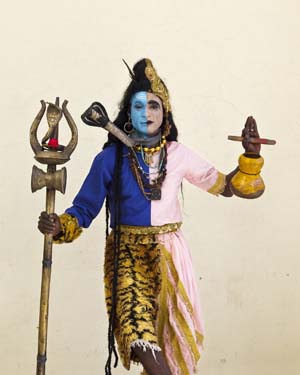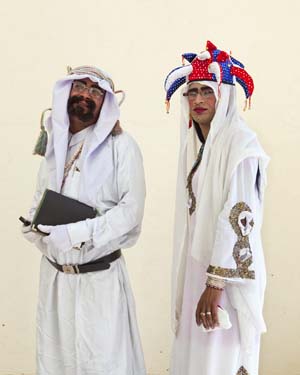Sampling India: Of Blind Men and Elephants
A new exhibition opened last month on 14th June 2011 at The Empty Quarter featuring six emerging photographers relating to the Indian subcontinent. It’s a great mix of work and I strongly recommend you don’t miss this show, it’s on till 31st July 2011. The giant Bollywood style movie poster featuring the six photographers is enough reason to visit the gallery.
Here’s a small selection of work from the show.
Mahesh Shantaramis an art documentary photographer based in Bangalore. About the “Matrimania” series:
We in India take our weddings very seriously. Sometimes, a wedding set is designed for impact -- it needs to strike an everlasting impression with guests who might arrive in the thousands, sending out a clear message of the family's social standing. At other times, the sets are traditional containers within which a marriage takes place. I have been documenting wedding sets and little associated details at weddings because I find them to be fascinating metaphors of my country's penchant for order and chaos; colour and noise; and the peculiar sense of taste and design or the lack thereof.
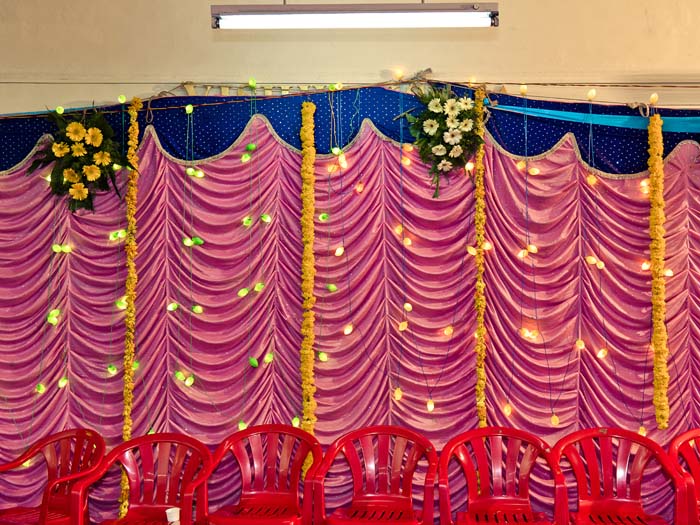
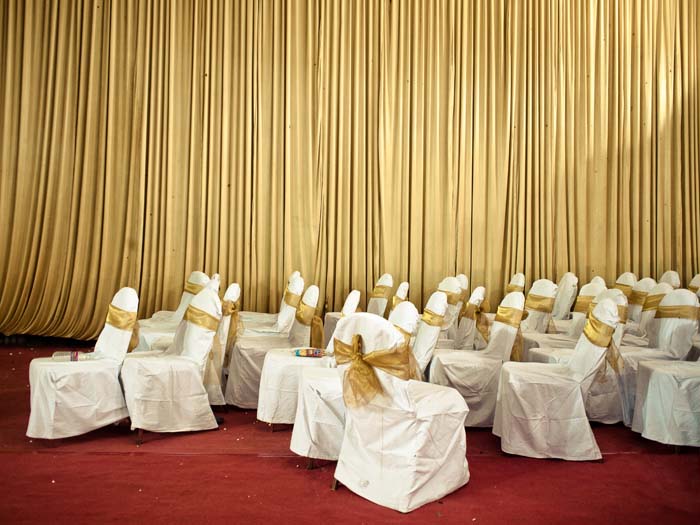
Michael Bühler-Rose was born in New Jersey (1980) and currently lives and works in New York. About his series "Indian Still Lifes"
Beyond the beauty of the Dutch Still-life lays the evidence of Dutch colonial power: its imports of exotic spices and goods from India. You can currently purchase any of these Indian imports, plus anything else you can find in the streets of Delhi, Mumbai, Kolkata, or Chennai, in the “Little India” sections of various major cities of the world. These photographs feature a mixture of contemporary and traditional items purchased in these “Little Indias,” while referencing the lighting, compositions, and scale of the Dutch still-life tradition. They create an aesthetic experience of near recognition while still allowing disorienting puncture points to come through. Although visually similar to the Dutch still-life, these pictures do not evidence Western colonial power but rather a reverse of power, of India settling the West.
© Michael Bühler-Rose - Mangoes, DVDs, Calendar & Honey
Neil Chowdhury is an artist working in photography and digital media. His work explores the relationships between individuals, their societies, and environments in different cultures. His “Waking from Dreams of India.” incorporates photography, video, audio, and photomontage to chronicle his journeys, physical and imaginative, as he explores and comes to terms with his Indian heritage.
This work tells the story of my lifelong dream of exploring India, the land of my father’s birth. He died without telling me much about the culture in which he grew up or the story of his early life there. Growing up in the United States, isolated from Indian culture fostered the cultivation of imaginative fantasy about the land of my ancestry. My knowledge of India ripened from exoticized Western media accounts. None of this prepared me for the discovery of the circumstances that drove my father away from his family as a teenager, or the actual masala mix of complexity, misery and beauty of contemporary India that I finally had the opportunity to see for myself. Having now made several trips, and collected a wealth of photographic images, videotape, and journal writings, I am shaping this material into a body of work that connects and contrasts my youthful fantasies of India with my adult experience building a relationship with the land of my ancestry. I hope to symbolize the merging of the actual lived journey with the expectations I carried for half a lifetime.
© Neil Chowdhury - God Pictures
Priya Kambli was born in India and moved to the United States at age 18 carrying her entire life in one suitcase that weighed about 20 lbs. She began her artistic career in the States and her work has always been informed by her experience as a migrant.
My photographs visually express the notion of transience and split cultural identity caused by the act of migration. I have been viewing this issue through the lens of my own personal history and cultural journey from India to the United States. This journey left me feeling disconnected- unable to anchor myself in any particular cultural framework. I have therefore formed a hybrid identity, a patching together of two cultures within one person. In my work I explore absence, loss and genealogy through the use of my own family snapshots. These personal artifacts are recontextualized alongside fragmented images and staged imagery to reveal the correlations between generations, cultures and memory.
© Priya Kambli - Dada Aajooba and Me
Vidisha Saini is a photographer who also also teaches, researches and writes. Her practice frequently draws on the unseen details of her own life. It encompasses still life studies and portraits, which address questions concerning identity, gender, sexuality and culture.
‘Behrupiyas’ are costumed performers changing looks every forty-two days; and transforming their mannerism according to the garb and character they adorn. They are a cluster of lower caste communities in India who are nomadic. Under the patronage of monarch they provided their services as messengers to another kingdom; today, they perform on streets, and collect alms door to door. Their looks are mostly inspired by popular culture; history, religion and politics documenting the visual culture of India.
I refer to these portraits of the ‘Behrupiyas’ as ‘Pratibimb’ (meaning reflection); like living with an alter ego. It is a reflection of the certainty that co-exists with the uncertainty within me. “Sometimes I wear glasses, because I have no gray hair.”
Zubin Pastakia is a photographer living and working in Bombay, India. After studying economics in college, he pursued further education in film and cultural studies. His photographic projects to date are a synthesis of these interests as they explore and trace the interstices of shifting cultural, economic and representational value. His series is my favourite. Can you guess why?
The Cinemas Project series visually traces the lives of Bombay’s disappearing single-screen cinema halls. Once symbols of modernity, the relationship that many of these halls share with the city has changed significantly as colonial Bombay metamorphoses into "post-industrial" Mumbai. On the one hand, this collection of images is a repository of the architectural form and interior detail of these buildings that range from the classic to the idiosyncratic. These buildings seem to exist today in defiance of the generic aesthetic and cultural experience of the city’s new multiplexes.
However, to view these halls merely nostalgically—and to cast them off to history—would be to deny them a place in the present; our lived present that is in constant play with time past and pending. As I explored these cinemas, which are simultaneously spaces of dwelling, labour and spectatorship, they revealed themselves to be sites of deep affective investment, traces of which are evident in every nook and corner.
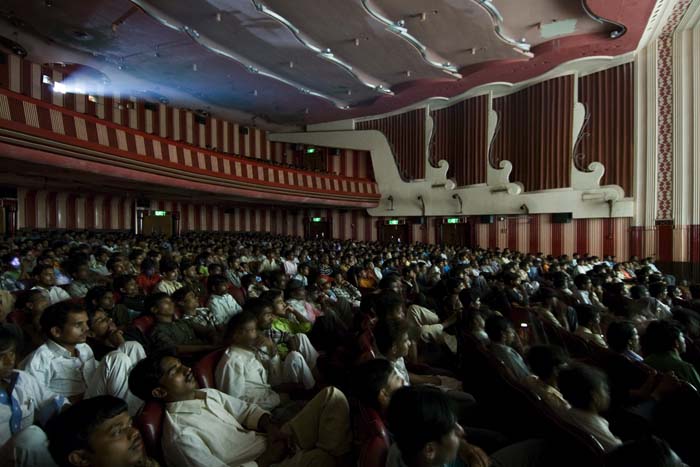
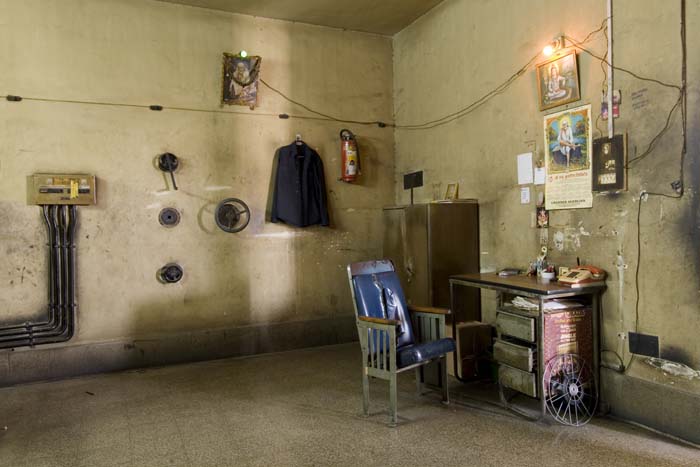
Exhibition details
Dates and timings: 14th June - 31st July 2011 (Sat-Thu: 9am-10pm; Fri: 3pm-10pm)
Location: The Empty Quarter, Gate Village, Building 2, DIFC, Dubai, United Arab Emirates
Phone: +971 4 323 1210


